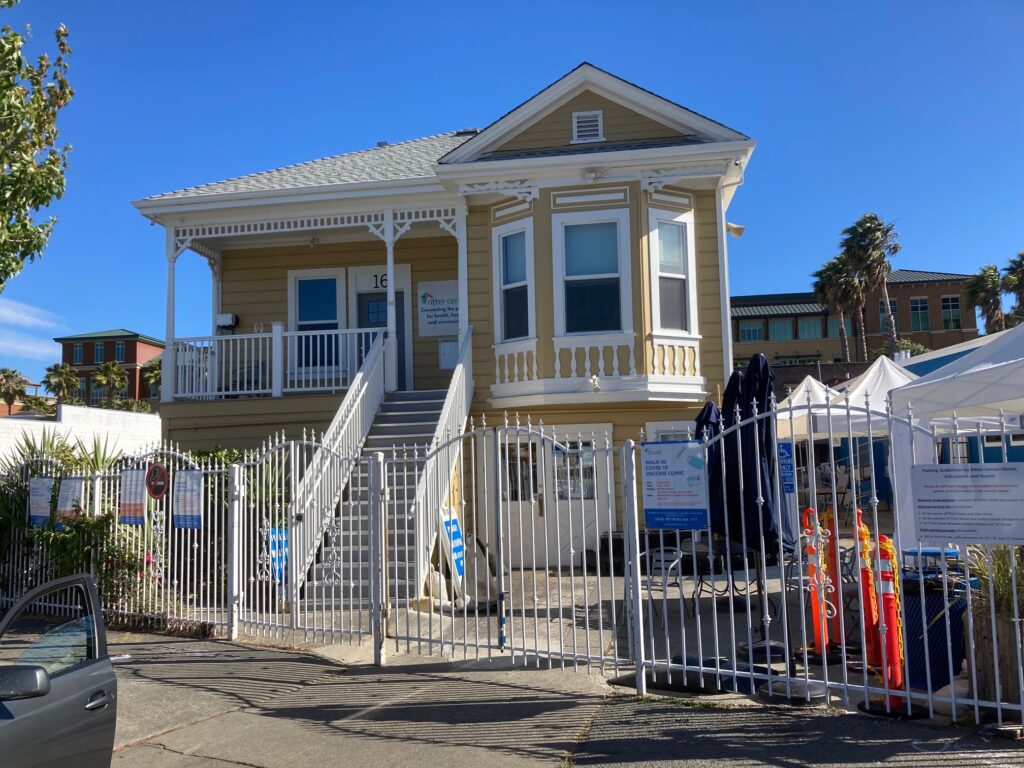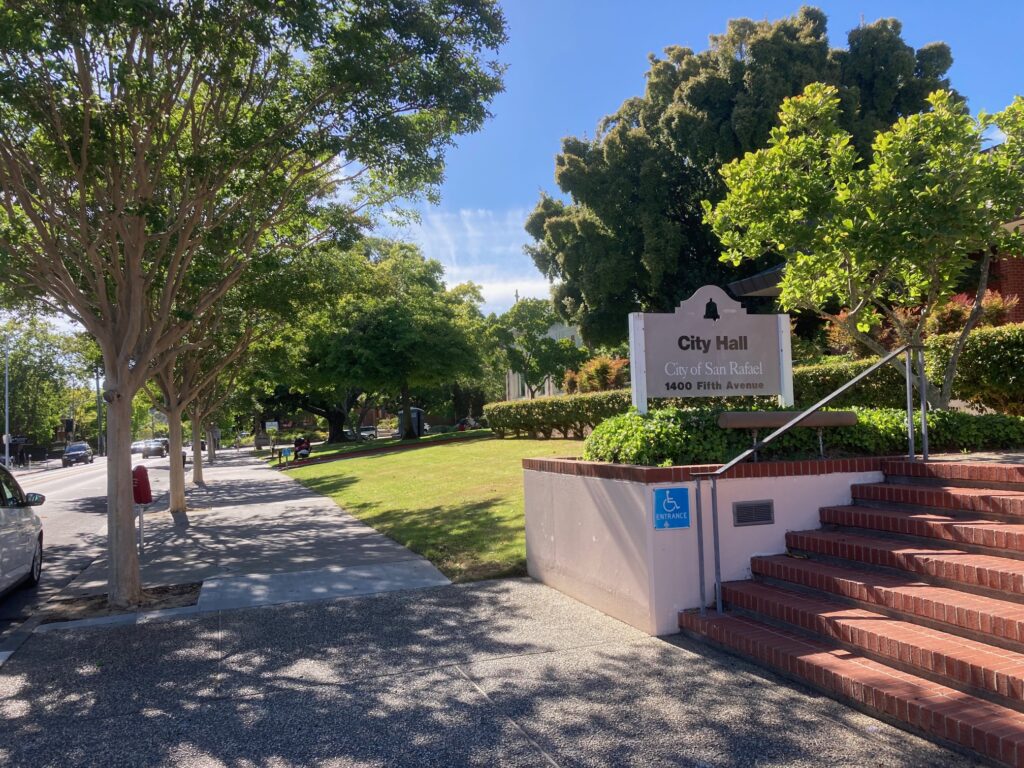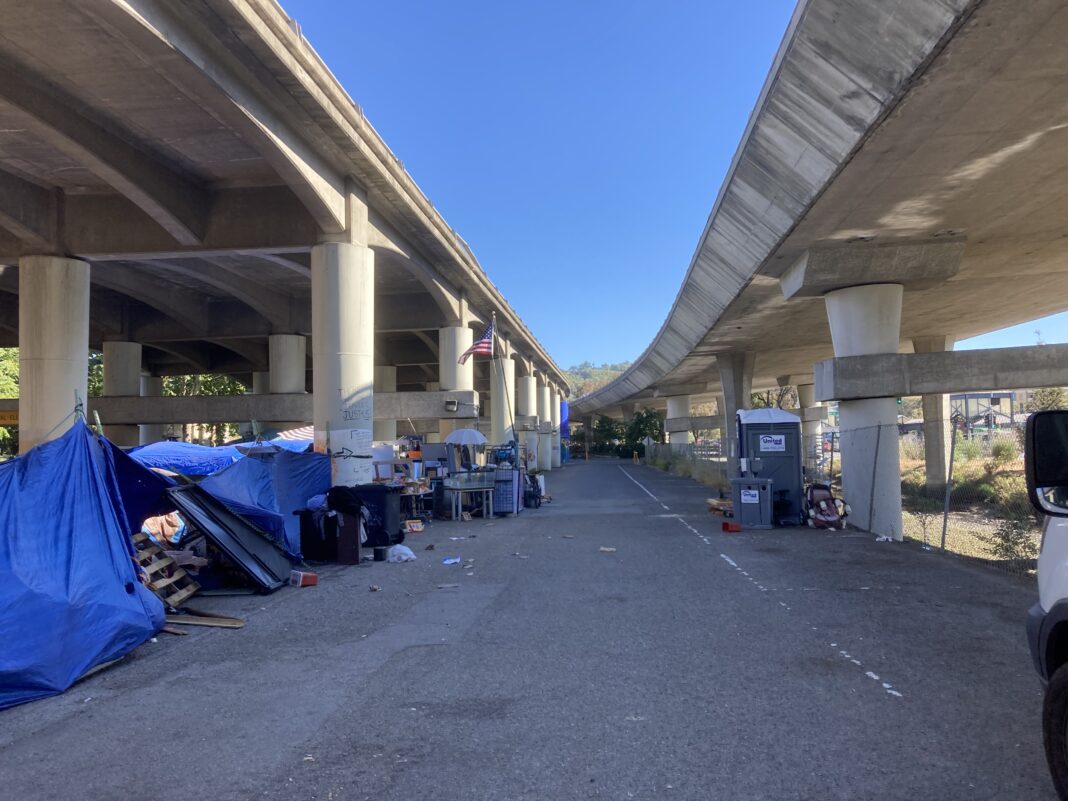Marin County and the City of San Rafael maintain they are successfully addressing the issue of unhoused individuals with the assistance of Andrew Hening, the City of San Rafael’s director of homeless planning and outreach, who has pledged to “end homelessness.”
Hening, a fresh-faced man with an MBA, was hired by San Rafael in 2016, and is rumored to be writing a book about the County’s many successes. Hening has won awards and presented the city’s successes at speaking engagements. And he is consulting other counties, cities and agencies on how they, too, can “end homelessness.”
On June 7, several weeks after the Pacific Sun initiated this investigation, Hening abruptly announced his resignation from his position with the City of San Rafael, effective June 30, according to an email obtained by the Pacific Sun. Hening’s email does not explain why he decided to leave his position, and Hening did not immediately respond to a request for further comment.
But while the County and San Rafael continue to tout dated claims of having dramatically reduced homelessness in the wealthy San Francisco suburb, unhoused individuals challenge the numbers present by local officials. Neither San Rafael nor the County have current numbers for unhoused individuals, as the biannual point-in-time count scheduled for 2021 was delayed until 2022 due to the pandemic. The 2019 point-in-time estimate for the total number of homeless in Marin County was 1,034—a 7% drop from the previous count. However, a recent estimate by the County found that the number of people living in their cars since the last point-in-time count had increased by 91%.
The fact that Hening said he was “disappointed” in the Ninth Circuit Court’s Martin v. Boise decision, which restricts public agencies’ ability to move people camping on public property unless they offer adequate alternative shelter, and his repeated claims about how many people the county has permanently housed, raised questions within the community of unhoused individuals and their allies. Using crowd-sourcing and public records requests, members of the homeless community began an investigation. The results were alarming.
Despite proclamations of their generous and effective approach to homelessness, documents obtained by the investigating group and shared with the Pacific Sun show that San Rafael officials, including Hening, worked to cut essential services that not only would have helped unhoused people survive until they could find housing, but would have alleviated some of the issues that property owners routinely criticize homeless people for.
In the midst of a punishing pandemic, some of the failures of San Rafael and the County to provide basic services to the homeless might be understandable. But with services for unhoused people having been dramatically slashed by San Rafael beginning in 2017, unhoused individuals were in a particularly compromised position when the pandemic struck.
Mail delivery, which is essential for applying for state and federal public benefits, as well as for staying in touch with family and friends, was ended for 500 unhoused people through a 2017 agreement created by Hening and San Rafael’s current Mayor, Kate Colin.
As Hening later described this action in a Sept. 15, 2020 email: “4-5 years ago we completely overhauled our approach to homelessness. Tactically, we shut down mail service at the Ritter Center, which had been serving 500+ people…. That doesn’t exist anymore. Ritter has shut down their showers (300+ visits per week), and we have no (sic) convinced Novato, Sausalito, and Fairfax to offer new homeless services in the form of Downtown Streets Team’s mobile shower program.”
The idea behind the January 2017 agreement, formally known as a Memorandum of Understanding (MOU), is that mail and shower services, once offered at the Ritter Center near downtown San Rafael, would be provided by other entities. However, to date those other entities provide only a fraction of the services previously supplied, and in locations that make it difficult or impossible for many unhoused individuals to access.
A lack of access to restrooms has been another long-running problem for people without shelter in Marin County. Prior to the pandemic, there was already a severe shortage of publicly accessible bathrooms, porta-potties and handwashing stations. Then, once the March 2020 shelter-in-place order took effect, access to the scant few publicly accessible bathrooms at local businesses, homeless care nonprofits and city buildings abruptly ended. San Rafael then worsened the problem by failing to provide compensatory porta potties.
One of the most common complaints made by angry homeowners about the homeless—as evidenced in the correspondence obtained through public records requests—is “filth,” including valid concerns regarding defecation and urination in the streets. But neither the City of San Rafael nor the County made any effort to explain to complaining residents why so few toilets were made available to the homeless once restrooms in private businesses closed due to the pandemic.
As of the date of this writing, Ashley Hart McIntyre, the homelessness policy analyst at Marin Health and Human Services, was unable to provide any actual number for how many porta potties are available in the County, nor how often they receive maintenance.
An email sent by Sara Hunt, a Ritter Center case worker, made the situation at the start of the pandemic painfully clear: by the end of March 2020, four functional porta potties throughout all of San Rafael, with an extra unit ordered by Ritter Center on March 26, several weeks into the lockdown. Estimates of at least 200 people experiencing homelessness in San Rafael at that time would indicate that roughly 50 people had to share each porta potty station in the early weeks of the pandemic.
To make matters worse, photos provided to the Pacific Sun by people who used the porta potties show they were haphazardly serviced, and often unusable.
Given this context, it is not at all surprising that some people without shelter resorted to relieving themselves in public spaces.

Relocated
During the pandemic, San Rafael continued to relocate encampments. While many Bay Area cities did the same, Marin and San Rafael were comparatively more aggressive in their tactics, according to emails obtained by the Pacific Sun.
On May 12, 2020, Hening sent an internal email stating that Marin remained the only county in the Bay Area that had not provided food or water to unhoused encampments. “I’m not sure if this is good or bad,” Hening continued, “but San Rafael remains hands down the most proactive on encampment cleanup of any jurisdiction in Marin.”
Further correspondence indicates that Hening and Colin well understood that such “encampment cleanups” or “sweeps” merely pushed unhoused individuals out of one area of the city and into another.
In one notable case, an enforcement action moved an encampment a mere block. “Many had assumed that the homeless encampment cleared under the freeway earlier this week would result in individuals being settled into housing. It was disappointing to see that the encampment was only moved a block away,” a resident emailed public officials on Jan. 22, 2021.
Other emails show that San Rafael officials spent time requesting that Caltrans, the state transportation agency, define the minimal amount of temporary housing the city was required to provide to homeless people before the state agency would agree to relocate an encampment.
In a carefully worded response, a Caltrans official finally wrote back that the agency did not have such information at the ready because San Rafael was the only municipality to inquire what the minimum provision was.
In a November 2020 email, now-Mayor Kate Colin revealed that then-President of the Board of Supervisors Katie Rice opposed temporarily housing five people camping on a Caltrans property because she was concerned that offering services would attract more homeless people. “What is to prevent these 5 people (if they got beds) from getting the word out to their buddies in Berkeley and then there will be 5 more and so on,” as Colin described Rice’s statement.
Supervisor Rice’s email record seems to reflect the County’s overwhelming concern with an increase in the next point-in-time count, as opposed to attempts to get people housed as winter approached. Her concerns were stated just two weeks prior to the death of a 56-year-old woman living under a freeway underpass.
In a Marin Independent Journal opinion article, Lynn Murphy, San Rafael Police Department’s mental health liaison, took pains to characterize the woman’s death as being related to mental illness. Murphy did not mention that the Marin County Coroner’s log book lists the cause of death as “Acute Metabolic Ketoacidosis due to Insulin Dependent Diabetes Mellitus,” a description which suggests that the deceased lacked a supply of insulin. Murphy also does not mention that on the night of the woman’s death, temperatures in Marin County dipped below freezing, which may have made it difficult for her to self-administer insulin and/or made the insulin unusable.
On May 8, 2021, the Pacific Sun wrote to Rice asking if the 56-year-old woman who died might have been one of the individuals to whom Rice had denied a temporary room in mid-November 2020. She has not yet responded.

City’s Response
After reviewing Hening’s correspondence, the Pacific Sun reached out to Murphy on May 10. Regarding the elimination of mailboxes at Ritter Center, Murphy said that Hening “had worked very hard” to create substitute mail services at another location, and some of the displaced had been able to retain their mail services at the Ritter Center.
I asked Murphy how many unhoused people had used mail services at Ritter, and how many had been provided mail service at another location. Murphy told me she didn’t know. Hening and San Rafael Mayor Kate Colin didn’t know either.
On May 27, Deputy City Attorney Lisa Goldfien released the City’s 8-page response to the Pacific Sun’s question. Instead of answering the questions, the letter mostly repeats talking points about the City’s successes in reducing homelessness in San Rafael. What few direct answers the letter does provide are contradicted by the emails obtained through public records requests, and by interviews with unhoused individuals who maintained their own records of what actually occurred.
Some of the claims that San Rafael made in their response are obviously not credible.
On May 25, 2021, the County approved a $795,751 contract with the Ritter Center to provide a myriad of services to the homeless. The staff report summarizes the services as including “mail and showers” but Mark Shotwell, the Ritter Center’s executive director, confirmed that showers remain totally unavailable at Ritter Center and that mail services are only available for approximately 50-100 individuals at Ritter.
The city also claimed to be providing 260 showers per week through Downtown Streets Team’s mobile shower unit. But as several unhoused individuals made clear, that wasn’t even possible in the limited time and with the limited mobile units that were employed.
As one unhoused Marinite immediately responded in an email to the Pacific Sun: “260 showers per week? There is no shower service this week in Fairfax. Service was canceled at least once last month. Usually there are 6-10 showers per week in Fairfax. They are running two of the three units since the first of the year. At 20 minutes per shower that is 6 showers per hour max and they only run 3 hours so 20 showers is not even possible.”
That disconnect resonated with homeless activist Jason Sarris, who said the Downtown Streets Team mobile shower service doesn’t actually go to encampments in Novato. Instead, Sarris says, the team parks the vehicle in a lot several miles from the city’s largest homeless encampment.
In her eight-page response on behalf of the city, Goldfien, the deputy city attorney, stated that San Rafael restored P.O. Box service for 200 individuals at the post office on Bellam Boulevard, and that anywhere from 60 to 110 individuals had been, on an unspecified fluctuating basis, able to retain service at Ritter Center. Because 500 individuals were dependent on mail service at the Ritter Center, approximately 300 mailboxes were lost in the transition, according to the city’s estimates of current mailbox availability and Hening’s Sept. 15, 2020 email to a constituent.
Goldfien did not concede that there are still approximately 200 individuals who lost mailbox access through the 2017 MOU, nor that there was a significant lag time between the elimination of the Ritter Center mailboxes and the provision of the Bellam Boulevard P.O. boxes.
This is important, because Hening claimed in his May 2020 email that the elimination of mail service at the Ritter Center, like the elimination of showers, was “tactical”—designed to drive down essential services to unhoused individuals in San Rafael in order to reduce homelessness in San Rafael.
But one elderly homeless man asked me to consider San Rafael’s insistence that the post office location, for those who were able to retain mail service, could only be Bellam. “They won’t let you get a P.O. Box at the D Street post office. They won’t let you have one at Civic Center. It has to be Bellam.”
“Why Bellam?” I asked.
“Services for the homeless are being moved into the Canal District,” he said. “Look at the Project Roomkey hotel locations. Canal residents can’t push back.”
This makes sense, given that, in all the angry homeowner correspondence which the City of San Rafael released in response to public records requests, there was no correspondence from any Canal District residents. From high Covid-19 deaths, to exploitative jobs which don’t pay a living wage, many Canal residents barely stayed afloat during the pandemic, despite the County’s self-laudatory claims of assistance and “equity.”
Activist Robbie Powelson made a separate records request into Hening’s correspondence with the Richardson Bay Regional Agency, the state agency which, during the past two years, has started clearing “anchor-outs,” the people who live on boats in the bay, with increasing speed. Powelson’s request turned up an email in which Hening promised that by housing anchor-outs in their marinas, a marina owner could potentially profit from Project Homekey and matching funds, at a per unit—per slip—benefit of up to $350,000. “So basically if the slips cost more than $100,000, a local match could get all the way up to $350,000,” Hening wrote.
Asked about the cost, Ashley Hart-McIntyre, a lawyer for Marin Health and Human Services, explained that an affordable housing unit in Fairfax’s recent Victory Village had cost $600,000 per unit. But what boat slip, which normally provides only a water and electricity hookup, can compare in cost to an entire apartment? In such an exchange, how would any of these resources actually benefit the essentially homeless anchor-out?
Questions like these need to be answered. Otherwise, San Rafael and other cities using their playbook may just continue to push the local people experiencing homelessness around, instead of “solving homelessness.”











